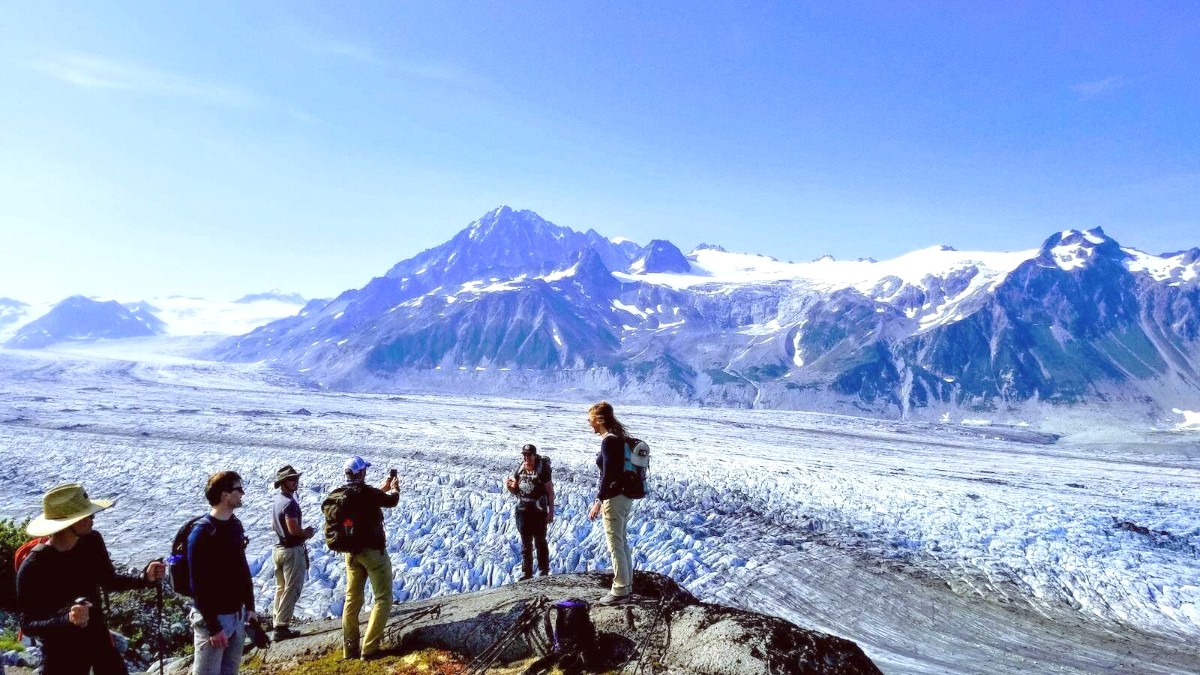
Alaska, USA
Even in summer, temperatures can drop, especially at night or on the water. A smart layering system protects you from varied conditions. Avoid cotton as a base layer; it loses insulating properties when wet. Opt for synthetic materials or merino wool.
A smart layering system protects you from varied conditions, allowing you to add or remove layers as temperatures and weather change. Avoid cotton as a base layer.
Waterproof, sturdy hiking boots with good ankle support are required for trails that can be wet, rocky, or muddy.
Comfortable Walking shoes or Sneakers are good for exploring towns and easy walks.
Insulated Waterproof boots, like Bogs or Muck Boots, are excellent for fishing, tidepooling, or navigating rainy days.
Keep your documents organized and accessible. Losing documents while traveling causes significant stress.
Plan for your electronic needs. Alaska's remote nature means connectivity can be limited.
Protect your valuable camera equipment from Alaska's unpredictable weather. Bring extra power sources to keep your devices charged during long days outdoors.
Google Maps (download offline maps for areas with no cell service), AllTrails (for hiking trails, download offline maps).
NOAA Weather or MyRadar provide accurate forecasts. Alaska Department of Fish and Game (ADF&G) apps offer information on fishing regulations. INaturalist helps with species identification.
Cloud storage services (Google Drive, Dropbox) or an External hard drive protect your photos and important documents. Back up regularly, especially your trip photos.
A well-stocked health kit provides comfort and safety in various situations.
Bring all necessary prescription medications in their original containers. Pack essential over-the-counter remedies for common travel issues.
A Daypack (20-30 liters) to carry water, snacks, extra layers, and a first-aid kit. Trekking poles. A Headlamp for early morning starts or late evening hikes.
A tent, a Sleeping bag with an appropriate temperature rating, and a sleeping pad. Consider a portable cooking stove. A bear-resistant food container is required in some areas.
Consider renting fishing gear, bear-resistant food containers, and kayaks or paddleboards (bulky to transport). Bring quality hiking boots, your complete layered clothing system, and your preferred camera gear.
Do not overlook these items for overall comfort and convenience.
Embrace sustainable travel practices by using reusable items. Pack any specialty items that may be hard to find locally.
Dress in layers for Alaska's rapidly changing weather.
Cold weather drains electronics batteries quickly.
Cell service is spotty in remote areas; download maps.
Consider for deep backcountry exploration for safety.
Think of moisture-wicking base layers, insulating mid-layers, and waterproof outer shells. This system keeps you comfortable and dry.
Always pack extra batteries for electronics, as cold weather drains them quickly. For remote areas, consider a satellite phone and download offline maps for navigation.